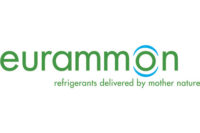Beyond making refrigeration equipment and refrigerant gases, manufacturers of such products are also involved in developments within the industry that show global sweep.
Here are several recent announcements involving manufacturers familiar to contractors and service technicians.
New Refrigerants
Which refrigerants are to be used in automotive air conditioning could have eventual implications in the stationary sector. Automakers have been looking at the synthetic HFO-1234yf and the ‘natural’ refrigerant CO2 (R-744) for auto a/c as that sector is moving away from HFC-134a.
On March 7, 2014, DuPont issued a statement that said in part, “Thierry Vanlancker, president, DuPont Chemicals & Fluoroproducts, (commented on) the final report of the European Commission’s Joint Research Centre (JRC) on its review of testing of HFO-1234yf.
"DuPont is pleased with the final conclusions of the JRC, as they reinforce our high level of confidence that HFO-1234yf can be used safely in automotive air conditioning.
“The JRC met with a range of stakeholders and conducted three public meetings to obtain input on the extensive safety testing that has been conducted on HFO-1234yf for use as an automotive refrigerant. The JRC focused, in particular, on the study conducted by Germany’s Federal Motor Transport Authority, the Kraftfahrt-Bundesamt (KBA).
“KBA had concluded that its testing, based on the requirements of German product safety law, produced no adequate evidence of a serious risk related to HFO-1234yf. The JRC report went further, saying that these tests provided ‘no evidence’ of a serious risk.
“We note that multiple automotive industry groups, including the German Association of International Motor Vehicle Manufacturers (VDIK) representing 34 major car brands from all over the world and the SAE Cooperative research program comprising of 10 leading global automakers, have reached the same conclusion as the JRC that HFO-1234yf can be safely used in automotive air conditioning.”
Carbon Credits
As the industry sorts out global warming implications as related to refrigerants and well as equipment, deployment of carbon offset credits are receiving more attention.
In that regard, the reclamation company Rapid Recovery issued a statement on March 31, 2014, that, in part, said:
“Last quarter marked a historic period as Rapid Recovery was issued carbon offset credits from the California Carbon Exchange. These offsets are the financial instruments that carbon emitters (like electric and power companies) can use to meet their emission reduction requirements.
“This is the very first release of offsets that have ever been issued under the California Cap and Trade Program.
"‘It has been a very long and difficult road for all of the companies pursuing this. With this first issuance, the market makers will finally begin to see some return on the effort and investment they’ve made these past years to qualify for this,’ said Rich Dykstra, chief operating officer with Rapid Recovery.”
The statement went on to say, “This is truly a historic moment as U.S. companies finally have access to a system which incentivizes the destruction of these obsolete, ozone destroying, and very powerful greenhouse gases. Many years ago Europe adopted a similar system and has operated effectively under it. Australia simply disallowed any recycling and legislated the destruction of these refrigerants. Finally, California has led the United States by introducing a viable end of life option which provides an opportunity to economically eliminate these refrigerants from use in the United States.”
GreenChill
 The U.S. Environmental Protection Agency’s (EPA’s) GreenChill Advanced Refrigeration Partnership has linked the federal agency and the supermarket sector in recognition of efforts to reduce refrigerant charges in stores.
The U.S. Environmental Protection Agency’s (EPA’s) GreenChill Advanced Refrigeration Partnership has linked the federal agency and the supermarket sector in recognition of efforts to reduce refrigerant charges in stores.
In that regard, Carnot Refrigeration, which is based in Trois-Rivieres, Quebec, Canada, has announced it’s joining the partnership.
In its statement issued Feb. 18, 2014, the company said, in part, “The partnership emphasizes the adoption of green refrigeration practices such as using environmentally friendlier refrigerants, reducing refrigerant equipment charge sizes, limiting leaks in refrigeration equipment, and installing advanced refrigeration technologies.
“Carnot’s entry into the partnership demonstrates that Carnot is committed to a healthier environment.”
“This is the beginning of a partnership that is going to help us reduce harmful refrigerant emissions, protect the ozone layer, cut costs for supermarkets and consumers, and protect our health and the environment,” said Tom Land, EPA’s GreenChill manager.
“Carnot Refrigeration is thrilled to join EPA’s GreenChill Partnership,” said Simon Bérubé, vice president strategic development of Carnot Refrigeration. He noted that Carnot worked with GreenChill to certify the first CO2-transcritical supermarket refrigerant system in the U.S. The Hannaford supermarket located in Turner, Maine, received a Platinum-level GreenChill Store Certification and GreenChill’s 2013 Best of the Best award, thanks to the installation of Carnot’s refrigeration system. Following this, Carnot decided to join the GreenChill Partnership, becoming the first Canadian manufacturer to be part of EPA’s GreenChill Partnership.
Said Berube, “Carnot Refrigeration is thrilled to join EPA’s cutting-edge GreenChill Partnership. CO2 refrigeration is the future. We hope that this partnership will help supermarkets understand that there are huge opportunities to be an early adopter of these new technologies.”











